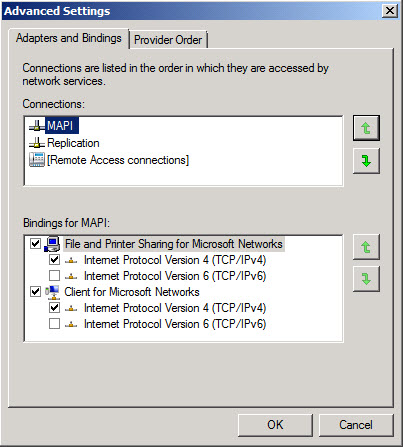I have a server with Intel 82576 Gigabit Dual Port Nics. I have configured them to use iSCSI boot the primary looks to 10.0.0.1/24 and the secondary looks to 10.0.1.1/24. The target is configured correctly. Everything boots as expected. I have added the MPIO feature and configured MPIO for the iscsi initiator as per: http://blogs.technet.com/b/migreene/archive/2009/08/29/3277914.aspx. My issue is that the iSCSI networks show up in the routing table like so:
I did not configure a default route in the Intel setup utility:
I tried to explicitly remove the 0.0.0.0 entry and leave blank, with no change. As you can see with the above routing table traffic attempts to travel over these routes:
C:\Users\Administrator>ping google.com
Pinging google.com [209.85.145.99] with 32 bytes of data:
Reply from 10.0.0.201: Destination host unreachable.
Reply from 10.0.1.201: Destination host unreachable.
Reply from 209.85.145.99: bytes=32 time=23ms TTL=51
Reply from 209.85.145.99: bytes=32 time=22ms TTL=51
Ping statistics for 209.85.145.99:
Packets: Sent = 4, Received = 4, Lost = 0 (0% loss),
Approximate round trip times in milli-seconds:
A ping to the outside world first attempts on 10.0.0.x/24 network, then on 10.0.1.x/24 network and then finally on the network the traffic should go over. I don't want my iSCSI traffic to ever show up with a default route. How do I get rid of it? route delete 0.0.0.0 mask 0.0.0.0 "on-link" results in: The route deletion failed: The parameter is incorrect. route delete 0.0.0.0 mask 0.0.0.0 on-link results in: The route deletion failed: The parameter is incorrect. route delete 0.0.0.0 deletes all default routes, then I have to add back in the "valid default route" of 192.168.100.6. I would like to not have to do a route delete though.




